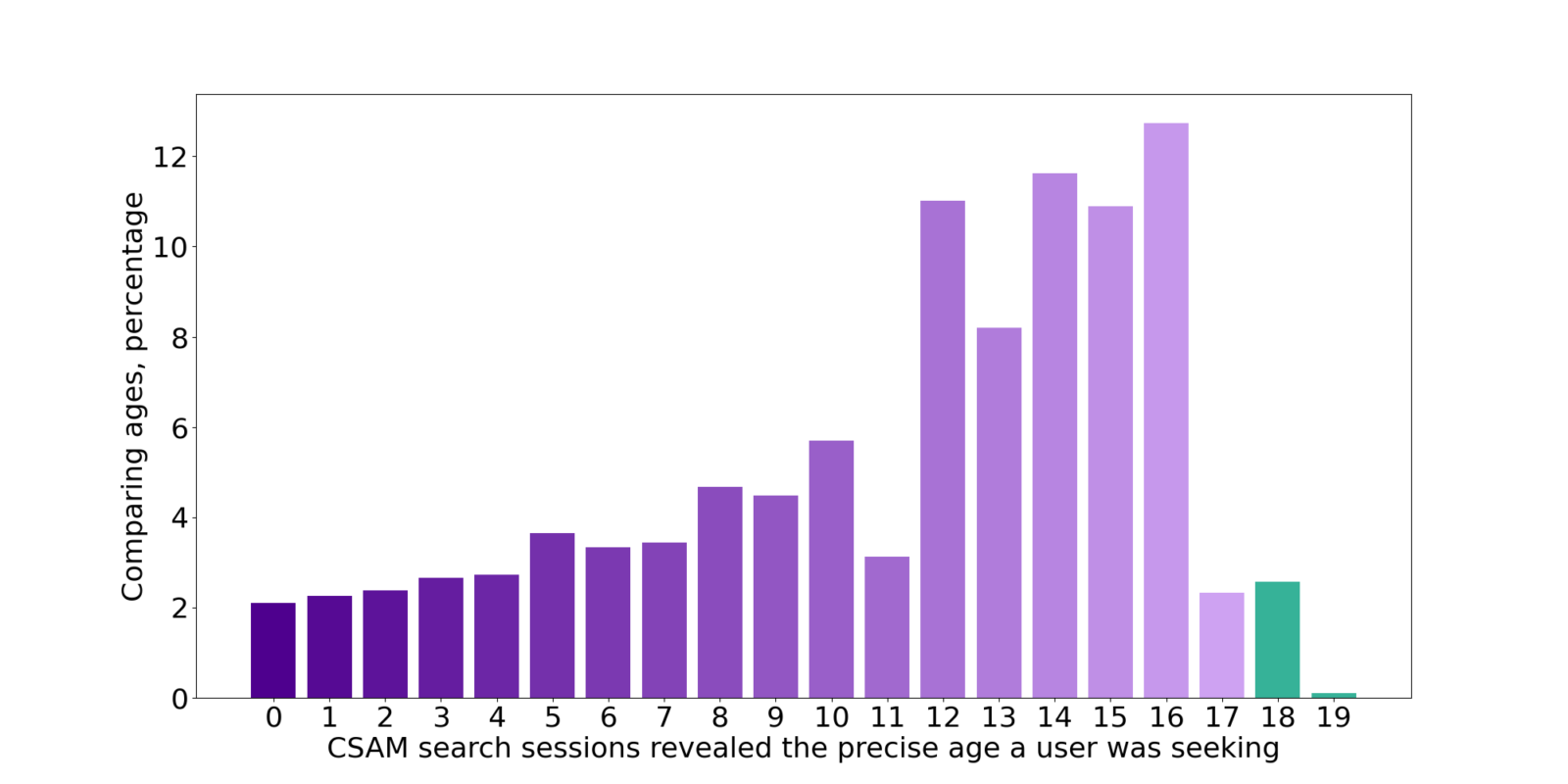Title: Investigating child sexual abuse material availability, searches, and users on the anonymous Tor network for a public health intervention strategy
Authors: Juha Nurmi, Arttu Paju, Billy Bob Brumley, Tegan Insoll, Anna K. Ovaska, Valeriia Soloveva, Nina Vaaranen-Valkonen, Mikko Aaltonen and David Arroyo
Venue: Scientific Reports 14, 7849 (2024). https://doi.org/10.1038/s41598-024-58346-7
Abstract: Tor is widely used for staying anonymous online and accessing onion websites; unfortunately, Tor is popular for distributing and viewing illicit child sexual abuse material (CSAM). From 2018 to 2023, we analyse 176,683 onion domains and find that one-fifth share CSAM. We find that CSAM is easily available using 21 out of the 26 most-used Tor search engines. We analyse 110,133,715 search sessions from the Ahmia.fi search engine and discover that 11.1% seek CSAM. When searching CSAM by age, 40.5% search for 11-year-olds and younger; 11.0% for 12-year-olds; 8.2% for 13-year-olds; 11.6% for 14-year-olds; 10.9% for 15-year-olds; and 12.7% for 16-year-olds. We demonstrate accurate filtering for search engines, introduce intervention, show a questionnaire for CSAM users, and analyse 11,470 responses. 65.3% of CSAM users first saw the material when they were children themselves, and half of the respondents first saw the material accidentally, demonstrating the availability of CSAM. 48.1% want to stop using CSAM. Some seek help through Tor, and self-help websites are popular. Our survey finds commonalities between CSAM use and addiction. Help-seeking correlates with increasing viewing duration and frequency, depression, anxiety, self-harming thoughts, guilt, and shame. Yet, 73.9% of help seekers have not been able to receive it.



